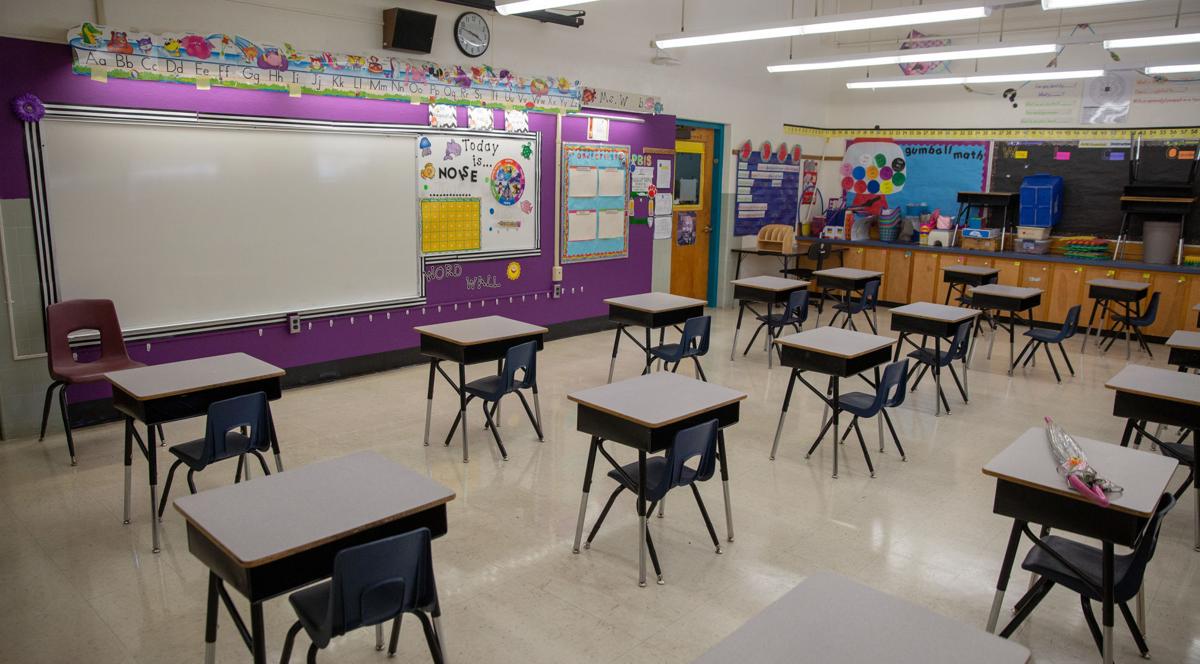At one Tucson Unified School District K-8 school, the math, reading and writing skills of sixth through eighth graders are slightly lower or about the same as those of fifth graders.
At one district middle school, 56% of students are at least three grade levels behind in reading and writing.
TUSD administrators presented these data points to the district governing board Tuesday to show learning gaps caused or worsened by the pandemic.
The administrators did not name the two schools and later refused to disclose the schools’ names to the Arizona Daily Star, citing student privacy.
A TUSD spokeswoman said the state rates one as an “F” school and the other as a “C” school, although that context was not provided during the board meeting. The data presented is not representative of trends districtwide, she said.
Administrators emphasized that students in all grade levels throughout the district have improved their progress during the current school year, especially those in grades one through five.
It’s harder to make up lost ground in the upper grades, they said, but presented no data on high school students’ progress.
However, the two specific examples they showed of middle-school progress alarmed some board members.
“If I’m reading this correctly, we’re not doing any catch-up. We’re not making any progress from fifth grade to eighth grade,” board member Ravi Shah said about the two unspecified schools.
“These are not numbers that we should be celebrating,” board member Sadie Shaw added. “That’s not good enough.”
TUSD Superintendent Gabriel Trujillo, who has held his post since 2017, responded, “Middle school math has been the Mount Everest every year I’ve been here.” Learning disruptions in the pandemic worsened the situation, he said.
One reason for the long-term issue is the advanced math concepts introduced in middle school, he said.
“It’s also the grades where we experience a great bulk of our teacher shortage,” Trujillo said. “It’s really difficult to get highly qualified math and ELA (English language arts) content specialists in sixth, seventh and eighth grades because most of them opt for the high schools.”
“We do see growth and growth is good. But we’re not done,” he said.
Data details
Teachers and staff have been working on a three-tiered system of support to provide increasingly personalized instruction to those who are still behind.
But district personnel said they were unable to immediately answer board members’ questions about how many students are in each tier of additional learning support, and where students placed in reading and math comprehension prior to this year.
Trujillo emphasized that students in younger grades are rebounding.
At the beginning of the school year, in ELA (reading and writing) placements, about 92% of students at the unspecified middle school were scoring at one or more grade levels below, a graphic showed.
Placement levels have improved this school year, but 83% of students are still at least one grade level behind. Within that group, about 65% are two grade levels behind and 56% are behind three or more grade levels.
Another chart summarizing reading and math comprehension levels among this year’s third- to eighth-grade students at the unidentified K-8 school showed steady progress from third to fifth grades.
Third graders showed a 269 math comprehension level and a 262 reading comprehension level. Both those numbers rose steadily to 300-level comprehension among the fourth graders and to 400 level among fifth graders.
But the comprehension levels plateaued in the sixth to eighth grades.
Sixth grade students at the unnamed K-8 school scored a lower average than the fifth grade students in both reading and math. The sixth grade average math comprehension level was 434, lower than the fifth graders’ 448, and the sixth grade reading level was 397, compared to the fifth grade’s 402.
The seventh and eighth grade math comprehension was even lower at 422 and 405, respectively. The reading progress rose to 457 in seventh grade and 458 in eighth grade.
District administrators later told the Star there are so few students represented in the data that disclosing the names of the schools might compromise their privacy.
“This data is collected from a subset of our district schools and should not be generalized to represent overall district trends,” TUSD spokeswoman Leslie Lenhart said.
She added that the two schools were used as specific examples to demonstrate that the district is in academic recovery post-coronavirus, and implementation of certain programs has shown positive academic growth.
Dig deeper, board says
Board members said the numbers demand more attention.
“They went from a few months behind in fifth grade to four years behind in eighth grade, and they’re not catching up as quickly,” Shah said. “We need to really dig deeper in terms of what is going on. Why is that the case?”
“It’s hard for us to get a comprehensive look at what’s going on. We don’t have all of the data, though I think we do have a lot of data that shows that there’s a lot of students that need a lot of help,” Shaw said.
The board asked for regular updates on students’ learning progress at future meetings, with Shah saying no other topic is more important to focus on.
“We have COVID running on our standing agenda, but we don’t have academic growth,” he said. “We need to start pivoting at some point, as a district, to really addressing this.”




